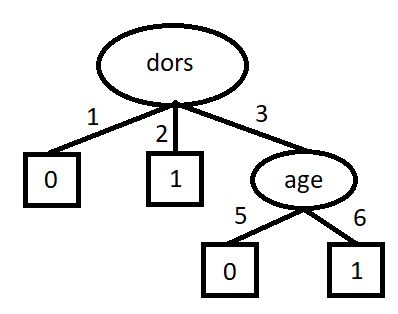I want to build an n-ary decision tree with categorical features. I am using ordinary ID3 algorithm to build a tree.
Lets take the next dataset as a training dataset for building a decision tree:
| dors | age | cost |
|---|---|---|
| 1 | 4 | 0 |
| 2 | 4 | 1 |
| 3 | 5 | 0 |
| 3 | 6 | 1 |
A decision tree will look as such:
Lets say now in test or prod time, an example comes with features dors=3 age=4 our tree cannot classify this example even though it has seen examples where doors=3 and examples where age=4.
My implementation throws an error that value is missing and sklearn implementations of decision trees are always binary trees.
Overall it cannot be expected that we covered all possible combinations in training set so there could always be examples in test set with unique combination of feature values which our tree cannot classify.
How can this problem be solved and what are some solutions for solving it?

